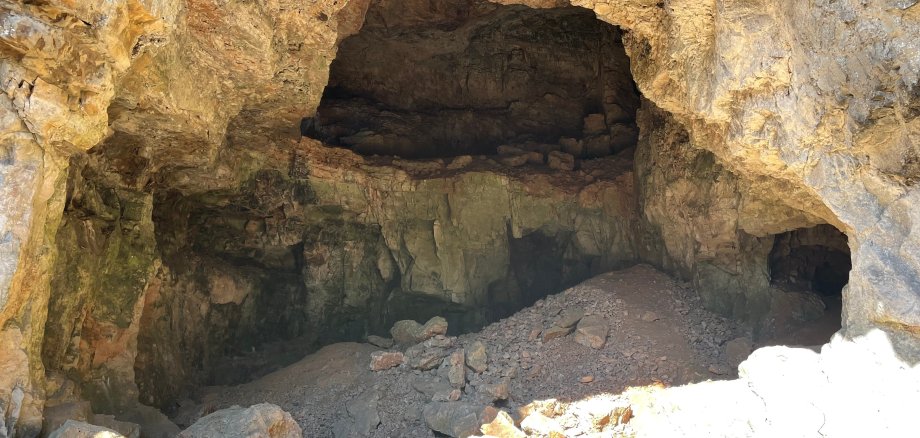Weiße Kuhle & Wichtellöcher: Two Geotopes of the Year Named at Once
What do the so-called "Weiße Kuhle" near Marsberg and the Wichtellöcher near Wabern have in common? Since 2022, this question has been easy to answer: they are both so special in the GrenzWelten National Geopark that they are entitled to bear the title "Geotope of the Year". This is the first time that two formations have been awarded the coveted quality distinction, which has been awarded regularly since 2017.
The selection of the (by definition) "geological formations of inanimate nature that provide insights into the development of the earth and life" as Geotopes of the Year 2022 was not easy, emphasises Geopark Director Kim Peis, and at the same time she is pleased that so many proposals were submitted as never before. "In the end, the Weiße Kuhle and the Wichtellöcher came out equally outstanding in the review and voting." Both geotopes have a particularly high geological value, and at the same time they are great excursion destinations in the Geopark. And although they now have the commonality of the award in 2022, they were created in two completely different geological eras... a clear indication of the geotope diversity in the GrenzWelten.
The Weiße Kuhle near Leitmarer Straße between Obermarsberg and Erlinghausen is a cave of the former Zechstein sea, which extended over large parts of Europe around 250 million years ago. Thanks to the Zechstein limestone deposits, the Korbach Fissure was also formed, which is home to the Geopark's heraldic animal: Procynosuchus, the Korbach prehistoric dachshund. About 800,000 years ago, the Glinde River ran through this elevation, leaving behind a more than 200-metre-long cave, today's Weiße Kuhle. Unfortunately, only the front part of the cave can be viewed during guided tours, the rest is in danger of collapsing. Fossil remains of the extinct cave bear, a relative of our polar bear, were found in the cave. The complete skeleton of a cave bear, as well as other finds from the White Cave, are on display in the museum of the town of Marsberg, and a geo-station at the cave will be installed this year. An overview of guided tours in and around Marsberg is provided by the Geopark's calendar of events.
A little later, around 242-235 million years ago, the rocks of the Muschelkalk period were formed, the site of the Wichtellöcher between Uttershausen and Singliser See in the Schwalm. Deposited in the primeval sea, the Wichtellöcher consist mainly of limestone and marl. They were only uncovered much later, in the New Earth Age, when the Schwalm eroded out old rocks and the erosion created two caves 12 metres apart - today's Wichtellöcher. About half a metre high and just as wide, according to legend they served as tunnel entrances and exits for the dwarves who stored gold there. The Wichtellöcher are easily accessible via a field path (between Uttershausen and Lendorf), but a hike along the Schwalm from Singliser See or Uttershausen is also pleasant. There is an information board on site, and a guided tour by the Geopark is being planned.
